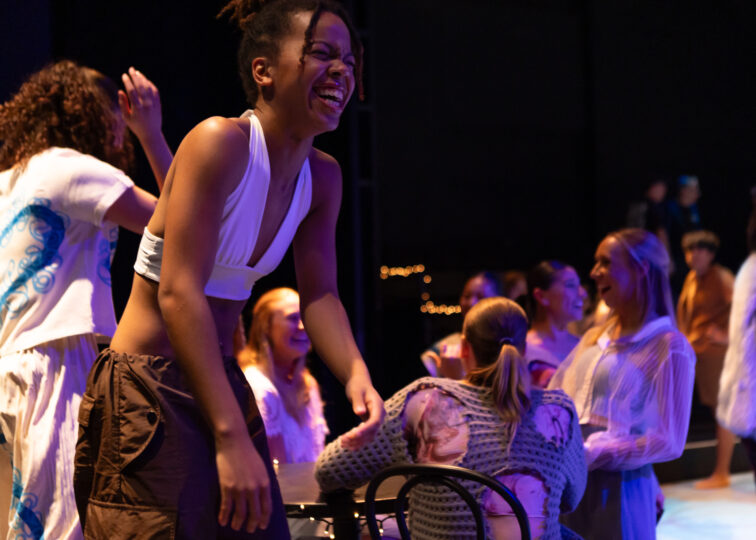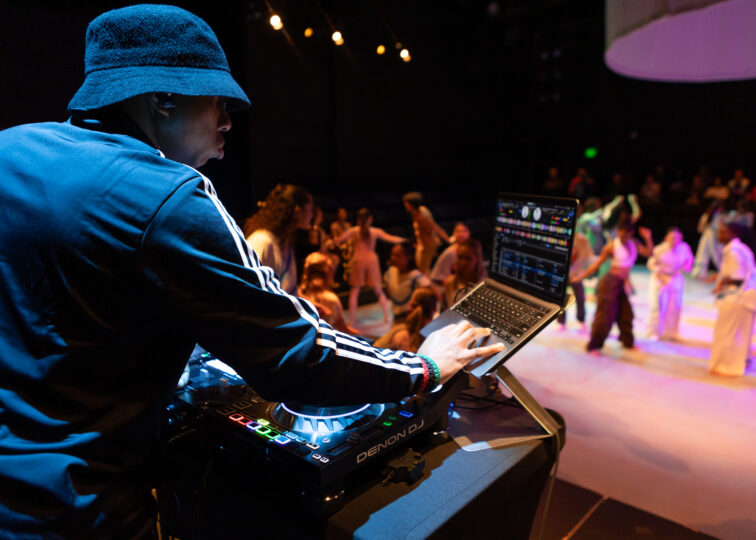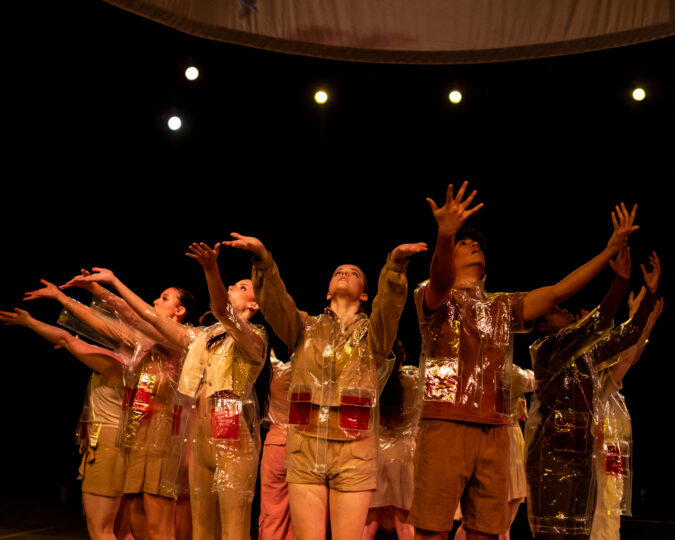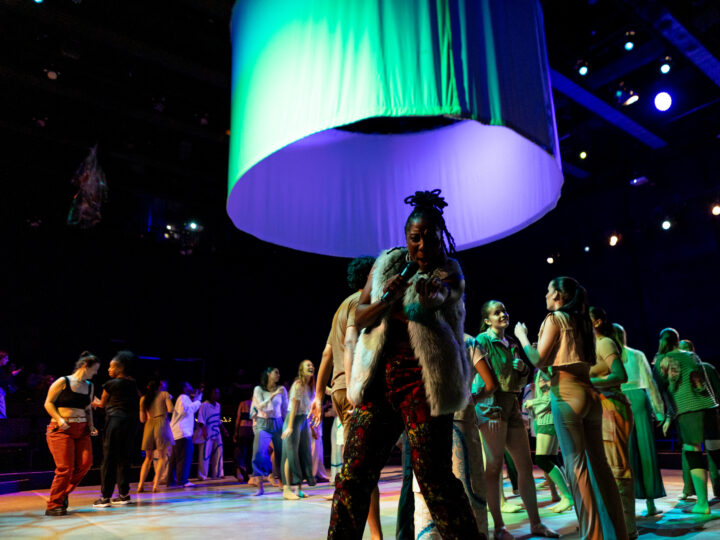“This is not going to be your traditional black box theatre performance,” shares Gesel Mason, choreographer, professor, dancer and artistic director of CYPHERS. Mason stands in a corner of the Oscar G. Brockett Theatre, gesturing towards the rows of seats, the DJ booth and the circular projection screen suspended above the stage. The stage is surrounded by seating on all four sides, breaking the barrier between audience and performer. We spoke with Mason, student choreographer Megan Davidson and dancers Madeleine Birmingham and Bryli Lee Jameson to understand why audiences seated “in the round” is significant for CYPHERS and what opportunities it has presented for performers and viewers alike.
Why is CYPHERS being performed “in the round?”
Gesel Mason: In regular speak, cypher means circle, but in street dance and hip-hop communities, a cypher is where people exchange styles and dance forms. What you’ll usually see is people in a circle and somebody dancing in the middle. So, I really wanted to take advantage of that and do something different and move the whole show into the round. So, it felt important to me that if we were going to honor the energy of a cypher… then we also had to change the space.

What exciting opportunities does this provide for performers and audience members?
Mason: The audience is invited to be in conversation with the dancers. It is a totally different experience for the dancers who are usually far away on a proscenium stage. This time there’s an intimacy that’s created by the cypher. What’s happening is there’s energy that happens within the cypher that we are invited to witness and be a part of and the circle lends itself to that, but it’s not just the seating. The entire design of the show, from the dances to the lighting, to the integrated media, is all inspired by the cypher… Even though we focus on what’s happening in the middle, there is no “out” of the cypher. The energy of the cypher, the rules of the cypher, the way we hype each other up, the way we engage with each other in community: [even] if you’re on the outside, there is no “out” of the cypher.

We’ve never done a dance in the round here. It’s not that dances don’t happen in the round. I’ll say this, normally they don’t happen in dance theatre spaces. They happen in the community. So, we’re bringing the energy, the spirit and the culture of a community into the theatrical space, into the Brockett Theatre. I think it’s making for a very exciting exchange. So, even though the styles are completely different, and the dancers are coming from, like, hip-hop, street dance, jazz, modern, contemporary and ballet [backgrounds], all of the forms in this world are invited to be next to each other.
Talk about your experience choreographing a piece for audiences on all sides. How has it influenced your choreographic process?
Megan Davidson (choreographer, where to go from here): As this is essentially my first time choreographing for a black box theatre, let alone in the round, I found it very challenging but exciting to see [the ways] I could affect the space so much that it doesn’t feel like a default front. It was an interesting push, but I really enjoyed this aspect as it feels like the audience can really be brought into the world that I am trying to create. It made my movement much larger and spacious in order to acknowledge all sides.

How does dancing “in the round” differ from dancing on other stages? What makes dancing “in the round” exciting?
Madeleine Birmingham (dancer, Ode to Cicadas): Dancing in the round is such a special and intimate experience. It allows you to be on the same plane as the audience, and I find it so enjoyable to be able to look them right in the eyes and breathe with them, telling stories on a much more personal level than if I were dancing on a big stage. Connection is crucial to conveying artistry, and dancing in the round allows for connection unlike any other performance layout.
Bryli Lee Jameson (dancer, On and On): Dancing in the round undoubtedly changes the relationship we, as performers, have with the audience. In so many ways it feels much more intimate and personal. On a technical level, it requires that we push ourselves to take in the space we are occupying and choose to fill it with our energy, our joy. I am so excited to see people! To build a world! To live in the many moments of radical joy!

Towards the end of her interview, Mason referenced the poster design for CYPHERS, noting that, “The thing looked folded, so the story I told myself about it was that it’s the invitation. Like it came out of somebody’s pocket.” You’ve received the invitation – now, as Mason put it, “you gonna meet me at CYPHERS?”
CYPHERS
November 14-22, 2024
Oscar G. Brockett Theatre
TICKETS
Written by Mackenzie Mann

